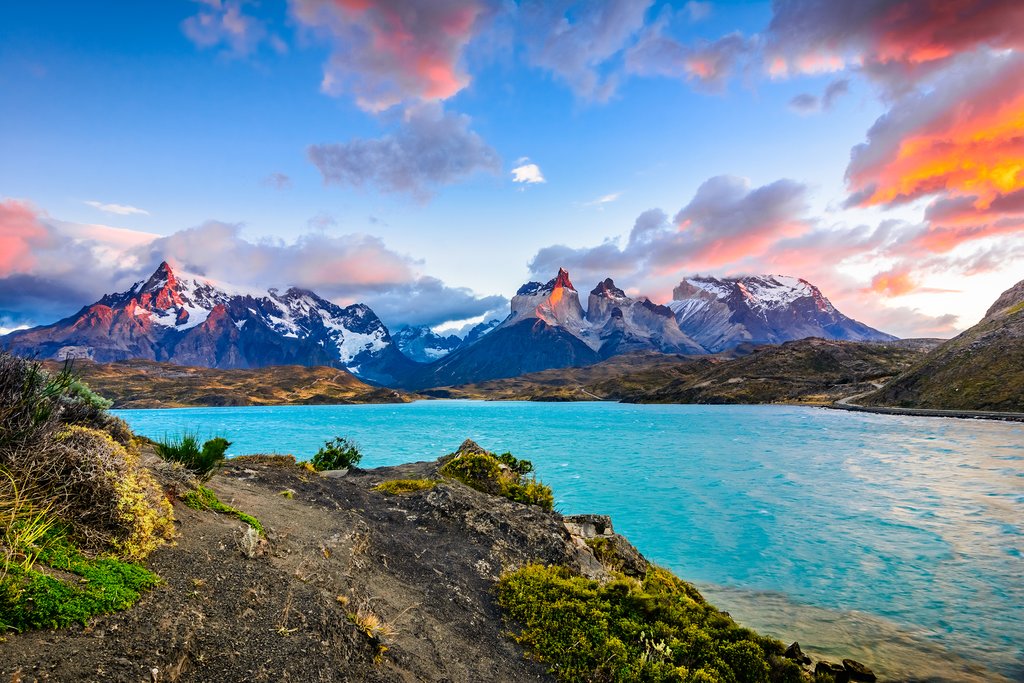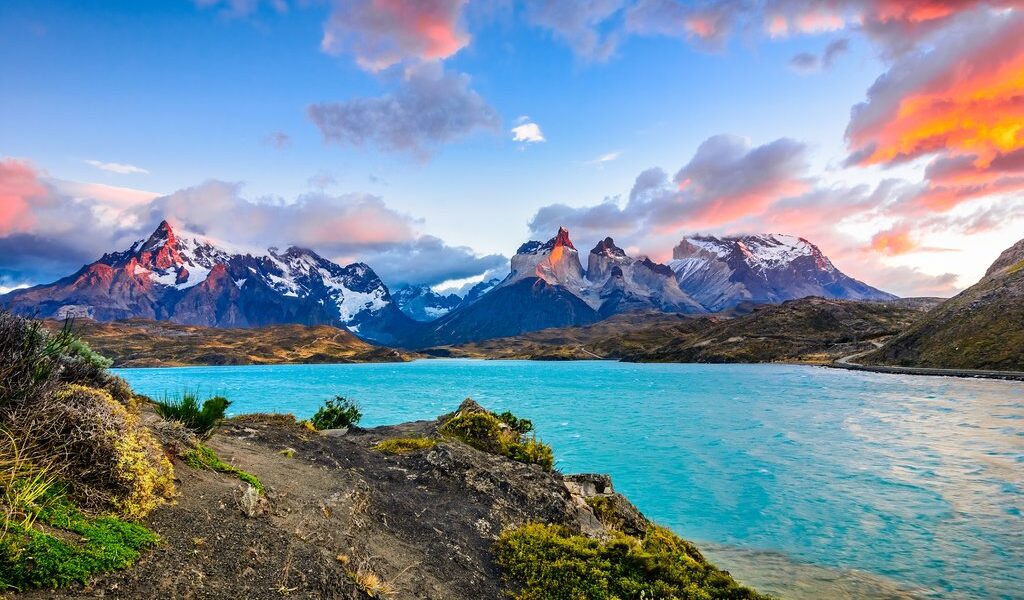
September is a transition month in Patagonia, when the region comes out of hibernation in preparation for the upcoming high season. This is also the best time for spring skiing at the mountain resorts and whale watching around Península Valdés. Read this monthly guide to learn more._x000D_
## Exploring Patagonia in September: A Comprehensive Guide
September in Patagonia marks a fascinating transitional period, a delicate dance between the receding winter and the nascent spring. While officially the beginning of spring, Patagonia operates on its own unique timeline, often lagging behind the calendar. Don’t expect an immediate burst of warmth; spring truly begins to make its presence felt around November. Even so, September offers its own distinct charm, with subtly shifting weather patterns and burgeoning opportunities for adventure.
Temperatures remain cool, generally hovering in the 40s Fahrenheit during the day. While this might sound chilly, the upside is that September witnesses a decrease in rainfall and an increase in daylight hours. These longer days provide ample opportunity to explore the stunning landscapes that Patagonia is renowned for. Remember, however, that weather in Patagonia can be notoriously unpredictable, so packing appropriately is crucial.
Regardless of your destination within Patagonia, layering is key. Warm clothing is essential to combat the chilly evening temperatures that descend after sunset and the ever-present possibility of strong, gusty winds. A windproof and waterproof outer layer is highly recommended.
For those fortunate enough to visit towards the end of September, particularly in Northern Patagonia near the Lake District, you might be greeted by the early blooms of wildflowers, painting the landscapes in vibrant hues. This is a truly special sight, a sign of the coming warmer months and a reward for braving the cooler temperatures.
From a travel perspective, September represents the start of the shoulder season in Patagonia. This means that you can potentially capitalize on a sweet spot between the harsh winter conditions and the overwhelming influx of tourists that arrive during the peak summer months. For travelers willing to embrace the cooler weather, especially in regions like Southern Patagonia, September offers a chance to experience the region with fewer crowds and potentially lower accommodation costs.
However, even during the shoulder season, advance planning is crucial. It’s recommended to make your reservations at least three months in advance to secure the best deals on flights, accommodation, and tours. Popular destinations and sought-after lodging options tend to fill up quickly, even outside of peak season.
When considering travel within Chilean Patagonia, it’s important to be aware of Chile’s Independence Day, celebrated on September 18th. This is a significant national holiday, and many locals take the opportunity to travel, leading to a potential increase in prices at popular tourist destinations. It’s wise to factor this into your planning if your trip coincides with these festivities.
So, where should you go in Patagonia in September?
For adventurous souls who don’t shy away from lingering winter weather, a trip to Chile’s Torres del Paine National Park is an excellent choice. While some trails may still be covered in snow, the park offers a unique opportunity to witness its majestic beauty before the summer crowds descend. The park’s iconic, towering peaks, stunning glaciers, and turquoise lakes create a breathtaking panorama. It’s also home to unique wildlife, including guanacos and pumas, adding to the allure. As a UNESCO-listed site, Torres del Paine National Park is a must-see. Thanks to its remote location and limited lodging options, it retains a sense of tranquility, offering a more intimate experience compared to more crowded destinations.
Another UNESCO-listed gem awaits on the Argentine side of Patagonia: Los Glaciares National Park. This park is renowned for its dramatic peaks and enormous glaciers, a testament to the power of nature. When visiting Los Glaciares National Park, you’ll likely base yourself in either El Calafate or El Chaltén, depending on your planned activities. El Calafate serves as a convenient gateway to the park, while El Chaltén is known as the trekking capital of Argentina, offering access to numerous hiking trails. As with Torres del Paine National Park, arriving in September allows you to explore Los Glaciares National Park before the peak season rush.
What activities are ideal for a September visit to Patagonia?
While the ski season in the southern Andes mountains may be winding down in September, you can still enjoy some spring skiing at resorts on both sides of the border. Check the conditions and availability at various resorts to make the most of the remaining ski season.
For those seeking dry-land adventures, Northern Patagonia is the place to be. As mentioned earlier, you might be fortunate enough to witness the first wildflowers blooming, adding color and vibrancy to the landscape. The trails in the Lake District, spanning both Chile and Argentina, offer fantastic opportunities for hiking, biking, and kayaking with fewer crowds. Just remember to dress warmly and be prepared for potentially changeable weather conditions.
If observing marine life is on your list, consider a trip to Argentina’s Peninsula Valdes. During the winter months, this area is a prime location for spotting southern right whales, often seen breaching and displaying their incredible size and power. In addition to whales, Peninsula Valdes is home to several penguin colonies. The largest of these is the Punta Tombo Rookery, home to over 500,000 Magellan penguins, a truly remarkable sight.
Returning to Los Glaciares National Park, even if trails are still partially snow-covered, September is an excellent time to visit the Perito Moreno Glacier. This impressive ice mass flows from the Andes mountains into the turquoise waters of Lago Argentino, culminating in a massive ice wall that curves dramatically around the lake.
If you’re patient, you might witness the awe-inspiring spectacle of “calving,” where large chunks of ice break off the glacier’s face and crash into the lake below, creating a thunderous roar. For a truly unforgettable experience, consider a full-day excursion that allows you to trek on top of the glacier, equipped with crampons and an ice ax.
Finally, let’s delve into some specific events that take place in Patagonia during September:
* **Chile’s Independence Day Celebrations:** Known as Fiestas Patrias, the week surrounding September 18th is a time of great celebration throughout Chile, including its southern regions. Expect large barbecues, plenty of wine punch, and general merrymaking in honor of Chile’s independence. These festivities commemorate significant historical events that paved the way for Chile’s freedom.
* **National Environment and Ecology Festival:** Held each September in Argentina’s Ushuaia, this festival promotes reflection and action to correct behaviors that threaten the environment. The festival features events and lectures by experts in the field.
* **National Ski Festival:** In late September, Argentina’s La Hoya Ski Resort hosts the National Ski Festival, attracting contestants from around the world. The festival includes skiing, mountain biking, and kayaking events, and the mountain setting provides a stunning backdrop for a variety of shows and entertainment for all ages.
With its unique weather patterns, fewer crowds, and stunning landscapes, Patagonia in September offers a memorable travel experience. Just remember to pack appropriately, plan ahead, and be prepared to embrace the beauty of this transitional season.
B-2011

